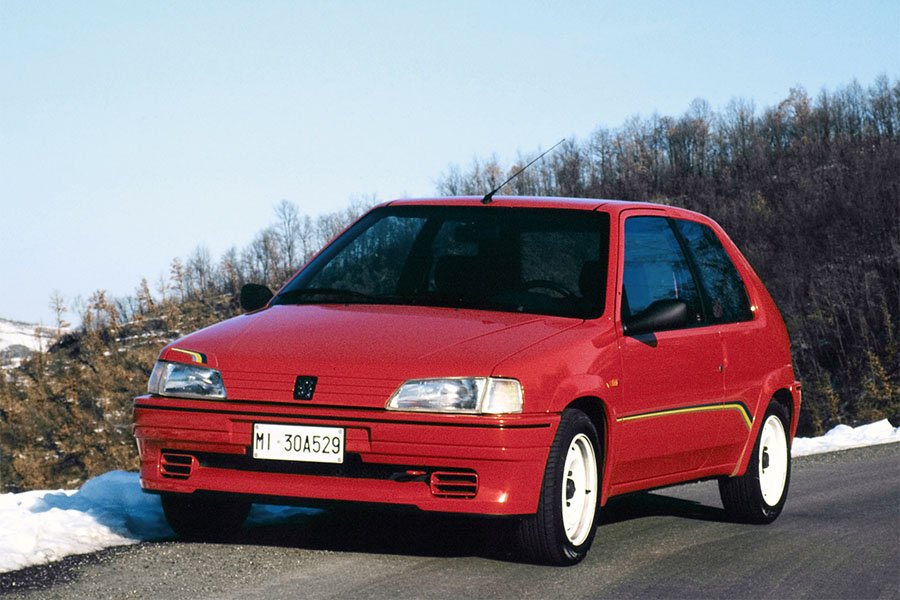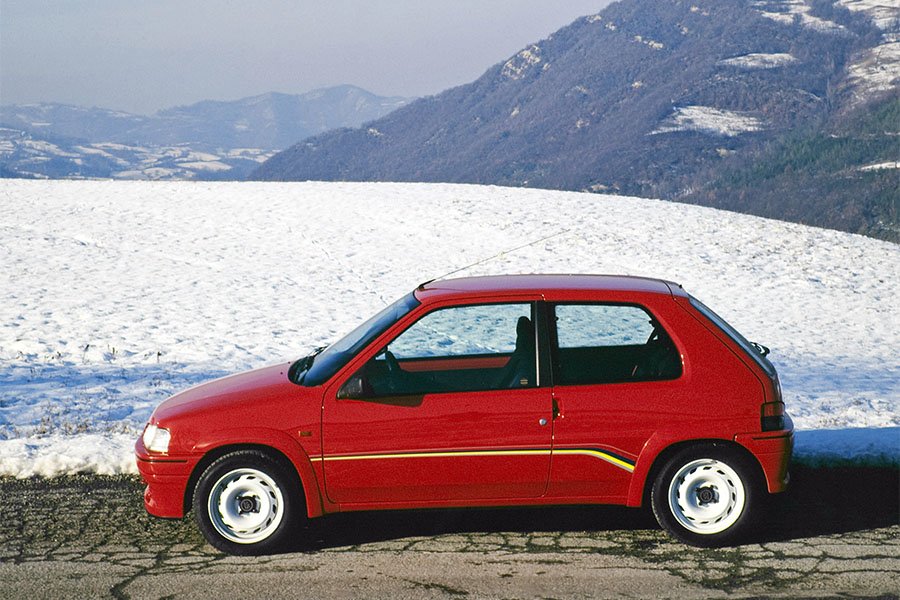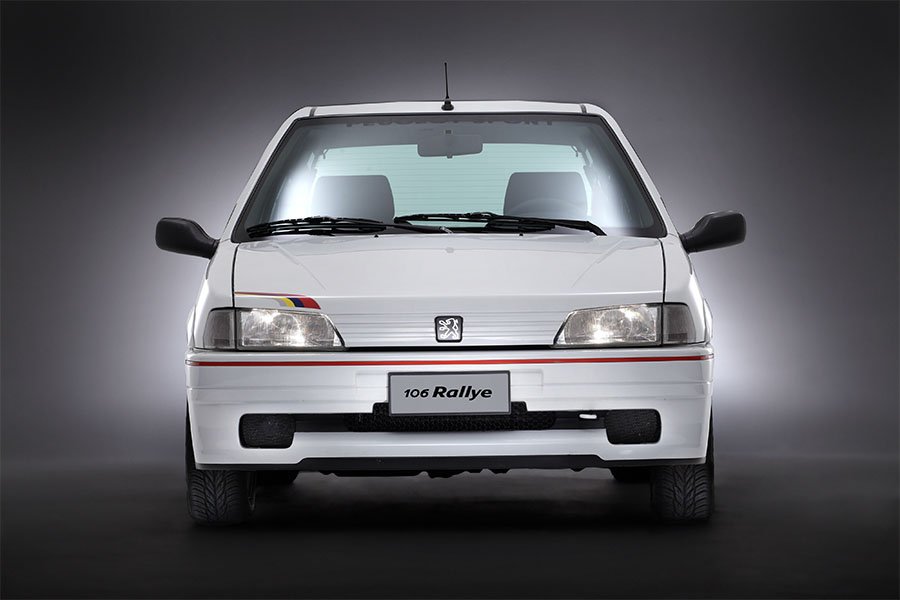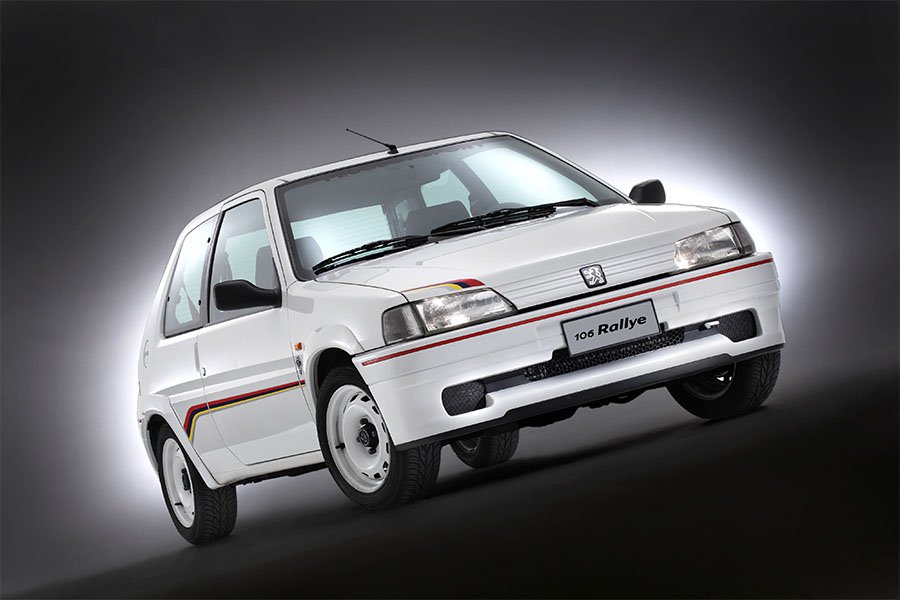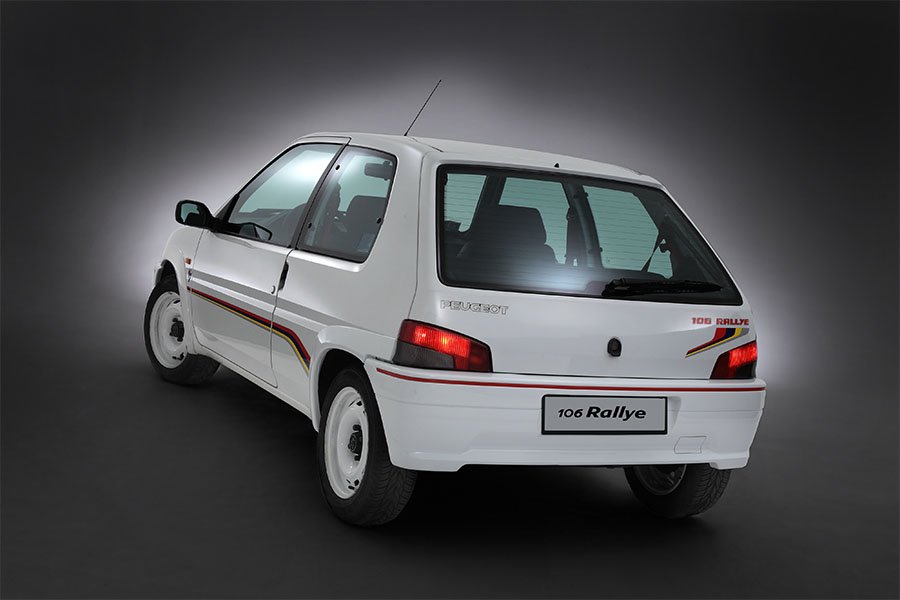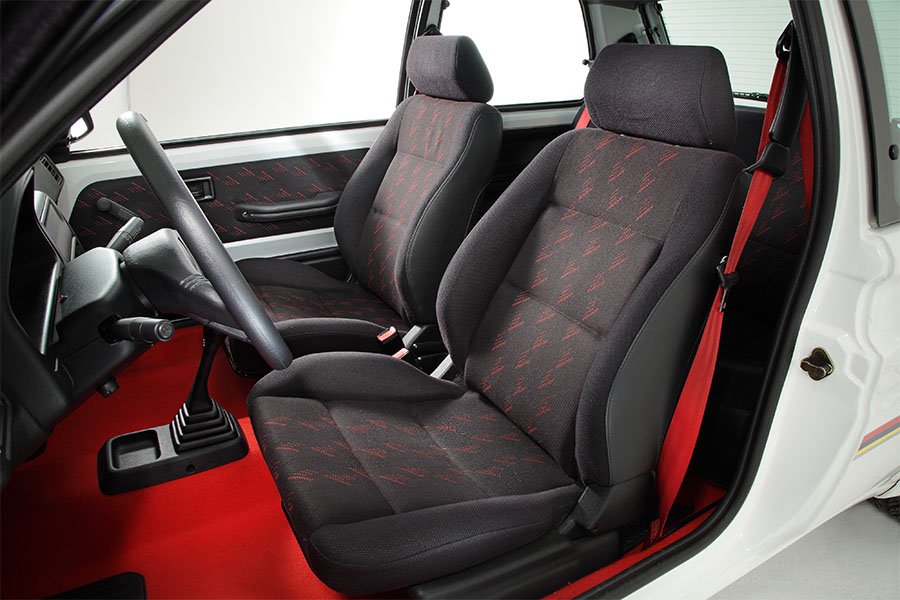Guide: Peugeot 106 Rallye Phase 1 - a Historical & Technical Appraisal
/BACKGROUND
Although Peugeot decided to quit top flight rallying at the end of 1986 as a result of the FIA’s unilateral decision to ban Group B cars from 1987, the French company did subsequently introduce a production-based screamer for the under 1.3-litre Group A category: the 205 Rallye of 1988.
With its uprated mechanical specification and spartan equipment level, the 205 Rallye went on to become the entry level car of choice for several seasons.
Less expected was the level of commercial success achieved by the featherweight new model. Group A regulations dictated that Peugeot had to build 5000 Rallyes within a twelve month timeframe. Executives at the firm thought they would just about be able to shift that many cars, but demand far-exceeded all expectations and a little over 28,000 were ultimately built in less than two-and-a-half years.
The 205 remained in production in one shape or form until 1998, at which point it was replaced by the all-new 206. However, back in late 1991, Peugeot had introduced an even more compact entry level offering: the 106.
The 106 was another front-wheel drive Hatchback and initially came with a choice of four cylinder petrol engines ranging in size from 1 to 1.4-litres. A 1.4-litre diesel was also offered. Most exciting was the sporty 895kg 106 XSi which came with a peppy 94bhp single overhead cam eight valve motor (a 106 GTi did not appear until 1996, by which time the face-lifted Phase 2 variant was in production).
In early 1993, Peugeot decided to create a new 106-based challenger for the under 1.3-litre category to replace the ageing 205 Rallye.
The resultant 106 Rallye was launched at the Paris Motor Show in October 1993 and achieved homologation on January 2nd 1994. Based on the 1.4-litre XSi, it came with an uprated short-stroke engine, stiffer suspension, a simplified interior and a host of cosmetic enhancements.
Unsurprisingly, the cheap and cheerful 106 Rallye became an instant hit with road testers and customers alike. By the time production came to an end in late 1995, more than three times as many cars had been produced than was needed by the Group A homologation requirements.
CHASSIS
Aside from reinforced front suspension mounting points, the Rallye’s steel monocoque bodyshell was identical to any other three-door 106. At 2385mm, the wheelbase was 35mm shorter than a 205.
The front suspension comprised MacPherson struts with forged steel wishbones and coil sprung dampers. At the back was a trailing arm and torsion bar arrangement.
Springs and dampers were imported from the 106 XSi, but thicker front and anti-roll bars were unique to the Rallye.
The servo-assisted brakes were also XSi items: 247mm ventilated discs up front and 180mm drums at the rear.
Instead of the 5 x 13-inch five-spoke alloy wheels fitted to the XSi, the Rallye came with distinctive 5.5 x 14-inch Michelin Sport rims that, although manufactured from steel, were actually very light. The rims were originally painted white and shod with Pirelli P4000 tyres.
A 45-litre fuel tank from the standard 106 was mounted under the rear seat.
ENGINE / TRANSMISSION
To qualify for the under 1.3-litre rally class, Peugeot had to create a special version of the 106 XSi’s TU engine.
The new TU2J2 motor was effectively a short stroke high compression version of the XSi’s TU3J2 unit. It featured an uprated cylinder head with an aggressive TU3-sized camshaft, a special intake manifold with optimum 2.5-litre capacity and inlet branches with a 1.6-litre capacity.
A Magnetti Marelli 08P21 combined multi-point fuel-injection / ignition system was adopted instead of the usual Bosch Motronic MP 3.1 arrangement.
Compression was increased from 9.9:1 to 10.2:1.
A displacement of 1294cc was achieved by retaining the existing 75mm bore dimensions and implementing a 3.8mm stroke reduction (73.2mm instead of 77mm).
The rest of the specification was pretty much unchanged; the TU engine had an aluminium alloy block and head with single overhead camshaft, two valves per cylinder, wet-sump lubrication and three-way catalytic converter.
It was transversely mounted in the engine bay and produced a peak output of 100bhp at 7200rpm. The torque rating was 80lb-ft at 5400rpm.
For comparison, the 1.4-litre engine in the XSi developed 94bhp at 6600rom and 86lb-ft at 4200rpm.
Each 106 Rallye was also fitted with a close-ratio five-speed gearbox.
BODYWORK
Unlike the 205, which had been styled in Italy by Pininfarina, bodywork for the 106 was designed by Peugeot’s in-house team. The result was arguably the best looking supermini of the early 1990s.
Like its late eighties predecessor, the 106 Rallye came with a variety of special cosmetic additions that differentiated it from the rest of the range.
Instead of the dark grey plastic bumpers, rubbing strips and wheelarch extensions fitted to the XSi, these parts were body coloured on the 106 Rallye.
The wheelarch extensions themselves were unique to the 106 Rallye.
Coloured inserts were added to the bumpers: red for Bianca White and Black cars or black for Cherry red cars.
The XSi-style front bumper assembly came without the fog lights normally fitted. Instead, the Rallye came with intake grilles, behind which were removable blanking plates to enable extra brake cooling if required.
A handsome decal kit was also applied to every car. Red, dark blue and yellow Peugeot Talbot Sport stickers were fitted to the hood, tailgate and down each flank.
INTERIOR
To save weight, cockpits were equipped to a pretty basic specification.
Peugeot fitted every car with special thin red carpet, a simplified heating / ventilation system, an uncovered glovebox compartment and reduced sound insulation.
In the same vein, the XSi’s electric windows, power steering and central locking were deleted.
Lightweight door trim panels from the base 106 were also fitted instead of the XSi’s fully trimmed type.
Other special equipment included red seatbelts, Phoenix black fabric upholstery with red accents and a PTS-branded three spoke sports steering wheel in soft-touch plastic.
Instrumentation comprised large analogue dials for road and engine speed, in between which was a small fuel read out. Off to the sides were more small gauges for water temperature and battery condition.
OPTIONS
Customers could choose from one of three exterior colours: Bianca White, Cherry Red or Black.
The only optional extras were a radio cassette player, a glass sunroof and an anti-lock brake system (ABS).
WEIGHT / PERFORMANCE
At 825kg, the 106 Rallye was 70kg lighter than the 106 XSi.
Top speed was 113mph and 0-62mph required 9.6 seconds.
PRODUCTION
Peugeot produced the 106 Rallye from October 1993 until October 1995.
During this time, approximately 16,500 were built, most of which were destined for the European market.
1000 right-hand drive cars were officially imported to the UK, but the actual figure is thought to be slightly higher owing to much demand for the little pocket rocket.
A Phase 2 Rallye subsequently arrived in March 1996 (covered separately). Unlike the original variant, this later face-lifted iteration used a 1.6-litre version of the TU engine.
Text copyright: Supercar Nostalgia
Photo copyright: Peugeot - http://www.peugeot.com
